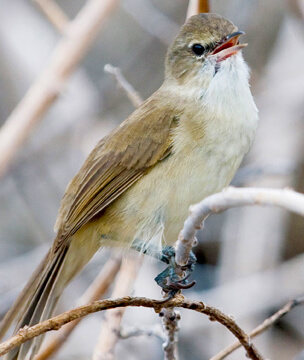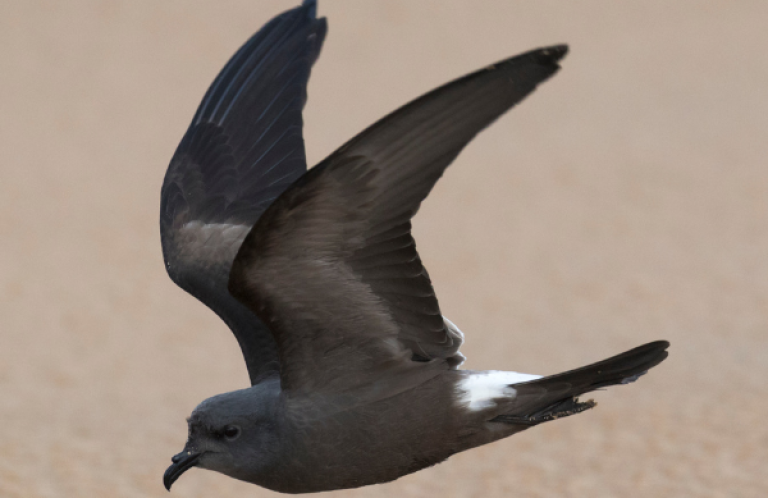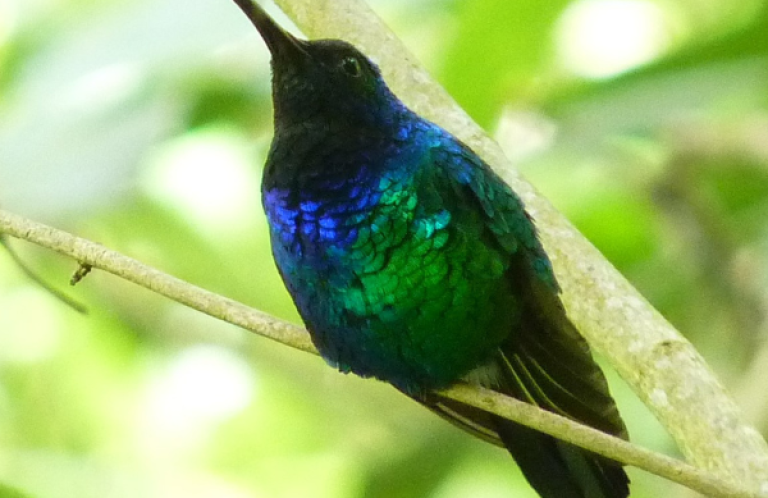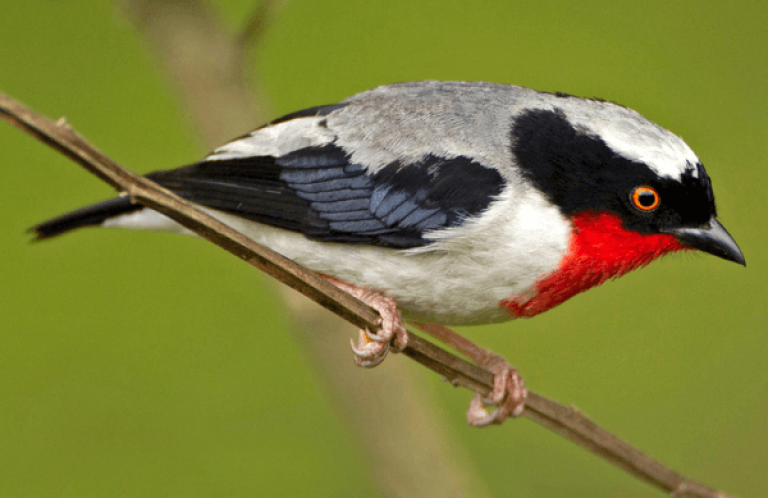Historic Expedition Seeks To Create a Second Population of the Critically Endangered Nihoa Millerbird
NEWS RELEASE
CONTACT
USFWS: Ken Foote 808-792-9535 or 808-282-9442, ken_foote@fws.gov.
American Bird Conservancy: Bob Johns 202-234-7181 or Chris Farmer 808-987-1779
 |
Niahoa Millerbird by R. Kohley |
(Honolulu, HI) Today, a historic scientific expedition was launched to establish a second population of the endangered Nihoa Millerbird on Laysan Island within the Papahānaumokuākea Marine National Monument (PMNM) to guard against the rare bird's possible extinction, thanks to a partnership between the U .S. Fish and Wildlife Service (FWS) and the American Bird Conservancy (ABC).
The team of experienced biologists from FWS, ABC, and Pacific Rim Conservation hope to capture 24 birds on Nihoa Island and transport them to Laysan Island. The team is accompanied by a Native Hawaiian cultural liaison. During the voyage from Nihoa to Laysan, aboard the ship M/V Searcher, the Millerbirds will be cared for by independent avian husbandry experts and a wildlife veterinarian from the U.S. Geological Survey. The Searcher is expected to arrive at Laysan Island with the birds on September 10.
The expedition is one of the most ambitious translocations ever attempted, requiring a three-day journey of more than 650 miles by sea for the small songbirds. If successful, this experimental translocation will mark the first time in nearly a century that Millerbirds will occupy Laysan.
Historically, there were two populations of Millerbirds, one on Laysan Island and one on Nihoa Island. The Laysan Millerbird (Acrocephalus familiaris familiaris), along with the Laysan Rail and Laysan Honeycreeper, went extinct in the early 20th Century when the island was denuded by non-native rabbits. Thus, the Millerbirds on Nihoa (Acrocephalus familiaris kingi) are the only Millerbirds remaining anywhere on Earth.
Nihoa Island is a rugged 155-acre volcanic island, one of the many islands and atolls that make up the Northwestern Hawaiian Islands stretching 1,200 miles northwest from Kaua`i. Millerbird numbers on Nihoa fluctuate between 30 and 800 birds. This single, small population faces a high risk of extinction from catastrophes such as severe storms, droughts, fires, and accidental introduction of alien species such as rats, mosquitoes, and/or diseases such as avian pox and malaria. Establishing a second population on the 1,023-acre Laysan Island will reduce this risk by increasing the total population size and the range of the species.
“For thousands of years, the Nihoa Millerbird miraculously survived low numbers, catastrophes including a severe brush fire in the late 1800s, and, most importantly, existence on a single tiny island,” said Sheila Conant of the University of Hawai‘i, who pioneered the study of the Millerbird in the 1980s. “These threats are as serious today as they have ever been, and are compounded by the potential for non-native predators and diseases to be introduced to Nihoa. This translocation could more than double the total number of birds by establishing a second population on another island, and provide insurance for the species.”
“This project is a model of cooperative conservation, and American Bird Conservancy is excited to be a part of it. The Hawaiian Islands have the ignominious title of the bird extinction capital of the world, with at least 71 species lost already and another 32 now listed as endangered. This project is an example of the kind of bold action that is needed to prevent the loss of the remaining birds,” said George Wallace, ABC Vice President for Oceans and Islands.
“This unique effort will teach us a great deal about how to restore endangered birds in the Northwestern Hawaiian Islands and other islands,” said Loyal Mehrhoff, field supervisor for the Pacific Islands Fish and Wildlife Office.
“The Fish and Wildlife Service has been conducting intensive restoration work on Laysan since the early 1990s, and reintroducing Millerbirds to the island is an important and exciting milestone in that restoration,” said Tom Edgerton, FWS co-manager of the Papahānaumokuākea Marine National Monument, a string of remote islands, reefs, and surrounding waters stretching 1,200 miles northwest of the main islands of Hawai‘i.
The Millerbird, which weighs less than an ounce, is a lively gray and brown bird that forages for insects among low shrubs and bunch-grasses. On Laysan, it will join the Laysan Finch, Laysan Duck, Hawaiian monk seal, several endangered plant species, and millions of nesting seabirds.
As a co-manager of the Papahānaumokuākea Marine National Monument, the FWS is proud to lead this project in collaboration with the American Bird Conservancy. We are grateful for the support and assistance from the National Fish and Wildlife Foundation, the University of New Brunswick, University of Hawai‘i, Pacific Rim Conservation, the USGS National Wildlife Health Research Center, and the Office of Hawaiian Affairs.
To learn more about the Millerbird project and read updates from Laysan, visit www.fws.gov/pacificislands/ and https://abcbirds.org/program/hawaii/.
Papahānaumokuākea is cooperatively managed to ensure ecological integrity and achieve strong, long-term protection and perpetuation of Northwestern Hawaiian Island ecosystems, Native Hawaiian culture, and heritage resources for current and future generations. Three co-trustees – the Department of Commerce, Department of the Interior, and State of Hawai‘i – joined by the Office of Hawaiian Affairs, protect this special place.
Papahānaumokuākea Marine National Monument was inscribed as the first mixed (natural and cultural) UNESCO World Heritage Site in the United States in July 2010. For more information, please visit www.papahanaumokuakea.gov


















































